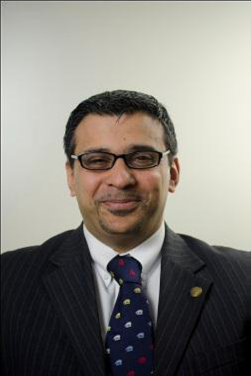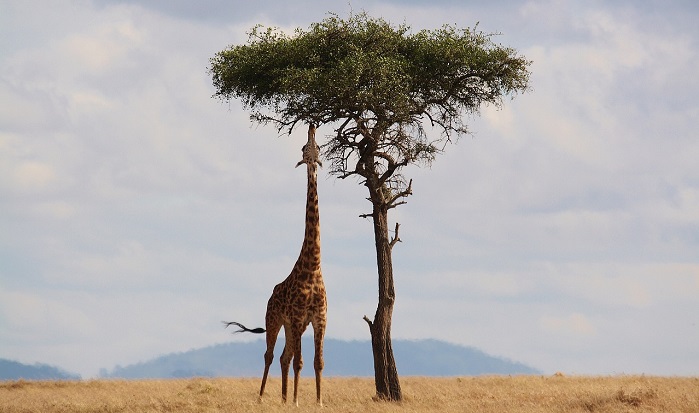Short Prefax: skill set needed for a globally competitive (and innovation inclusive) enterprise also seen as part of an eco-system that shall face global challenges and search of growth perspectives.
The evolutionary theories of Darwin and Lamarck cannot be applied independently to describe the evolution of some world-class clusters. A merged approach is de facto driving the evolution of clusters and enlarged eco-systems thanks to the role of intermediaries. This was the main outcome of the SME Convention plenary session within the Vibrant Gujarat Global Summit (VGGS) or the so-called “Davos in action” bi-annual event hosted by the Indian Government. Lamarck is best known for his “Theory of Inheritance of Acquired Characteristics”, dated 1801, where he stated that if an organism changes during life in order to adapt to its environment, those changes are passed on to its offspring thus change is ‘driven’ by the organism’s needs or desiderata. The metaphor of the Lamarck elephants (ie used to have short trunks but when there was no food or water they stretched their trunks to reach the water and branches, and their offspring inherited long trunks) can be used to describe the ‘evolution’ of innovative SMEs that ‘need’ to re-position themselves in the market and thus ‘extend’ their ‘innovation trunks’ (or necks in the famous giraffe example) strengthening collaborations with universities or investing more in technology transfer and research projects.
Darwin, in mid XIX century believed that organisms are all different and that those which happen to have variations that help them to survive in their environments survive and the offspring are born with their parents’ helpful traits. Most elephants used to have short trunks, but some had longer trunks. When there was no food or water that they could reach with their short trunks, the ones with short trunks died, and the ones with long trunks survived and reproduced. If we think at a cluster or eco-system we see that its heterogeneous composition can be seen as a strength but in some cases as weakness too, and the (overall) average level of innovation could be affected. Some members (SMEs, Large companies, universities, Public Administrations, etc) could die or starve or not evolve as they don’t have the chance to innovate. But evolution, it’s hard to say, is not an option for all, unfortunately.
On the other side the new challenge policy makers are facing is coupling growth with innovation thus not letting down traditional industries or sectors only because they’re not innovative enough. Which is the best “evolutionary approach”? Everyone must radically innovate or die? Can incremental innovation still play a role to rise wealth? Is it better to ‘force’ innovation or smoothly making it happen?
The main outcome of the VGGS was that the role of intermediaries (like INSME at international level or, for instance, T2i at regional level) is crucial as they could help in smoothly making the SMEs and the eco-system evolve to the next stage. It resulted of paramount importance the design of new services (ie foresight, technology and knowledge intelligence, IPR-based services, auditing, innovation financing, innovation policies) to help cluster members. The experiences/approached studied/applied at international level (ie Chile, China, India, Korea) make evidence that the one-fits-all methodology is not applicable and, at the same time, there should be a clear task/role for a clear/appointed organism. In some countries, namely India, China, Vietnam and Cambodia to list few, the inclusive innovation approach or frugal innovation, is becoming a trendsetter in searching innovations that from the very beginning are designed to be inclusive and propulsive and make the old-fashioned clusters evolve. In a different way.
All those approaches have in common the difficulty in finding the correct intermediary to whom give such huge responsibility of driving the eco-system evolution or in shaping the profile of the best intermediaries that, on its own side, should be not conventional but …. evolved.
 Dr. Anilkumar Dave is an Italian citizen of Indian origin having been in U.S.A. and India before setting down in Italy. After working in the ICT sector as consultant (i.e. Textile/Clothing/Fashion, Banking, etc.) between Italy and India he started working with the European Commission on several R&D projects (as coordinator or partner) representing public or private bodies targeting Technology Transfer and Innovation oriented ‘dialogue’ between Research and Industry. In the last years he has been appointed as officer of Italian governmental agency for Innovation and Industrial Promotion and after that worked as consultant for different stakeholders on the two main themes that characterised his recent professional life, Innovation and Internationalisation.
Dr. Anilkumar Dave is an Italian citizen of Indian origin having been in U.S.A. and India before setting down in Italy. After working in the ICT sector as consultant (i.e. Textile/Clothing/Fashion, Banking, etc.) between Italy and India he started working with the European Commission on several R&D projects (as coordinator or partner) representing public or private bodies targeting Technology Transfer and Innovation oriented ‘dialogue’ between Research and Industry. In the last years he has been appointed as officer of Italian governmental agency for Innovation and Industrial Promotion and after that worked as consultant for different stakeholders on the two main themes that characterised his recent professional life, Innovation and Internationalisation.
At present he is Head of Unit and in charge of Special Projects for t2i, the largest Italian Innovation Agency promoted by Chambers of Commerce and enterprises Association, whose aim is to foster industrial research for SMEs and promote Technology Transfer also through EU programmes and other public funds. Mr. Dave is also Advisor for Indian Business Development collaborating with the Indian delegation to Italy and consultant on international collaboration and research networking for FBK (the largest public funded micro-nano electronics/systems facility in Italy) and IRP (leading research centre on paediatric onco-hematology in Europe). He is regularly invited as speaker or lecturer on international innovation policies, marketing and technology transfer around Europe and currently collaborating with some Italian leading universities (Venice and Milan in primis).
His background is on Image Processing and Cybernetics and a post-grad on Marketing and Communication. He has launched a consultancy company in 1998 and also contributed to scientific review publication on very different topics, from rice weed control strategies to textile/clothing industry guide, from cross-cultural marketing to stem cell and muscle regeneration therapies. He is a sport passionate and former president of a basket team as well as certified sommelier and supporter of the Inclusive Innovation programme launched by the Indian Government National Innovation Council.



